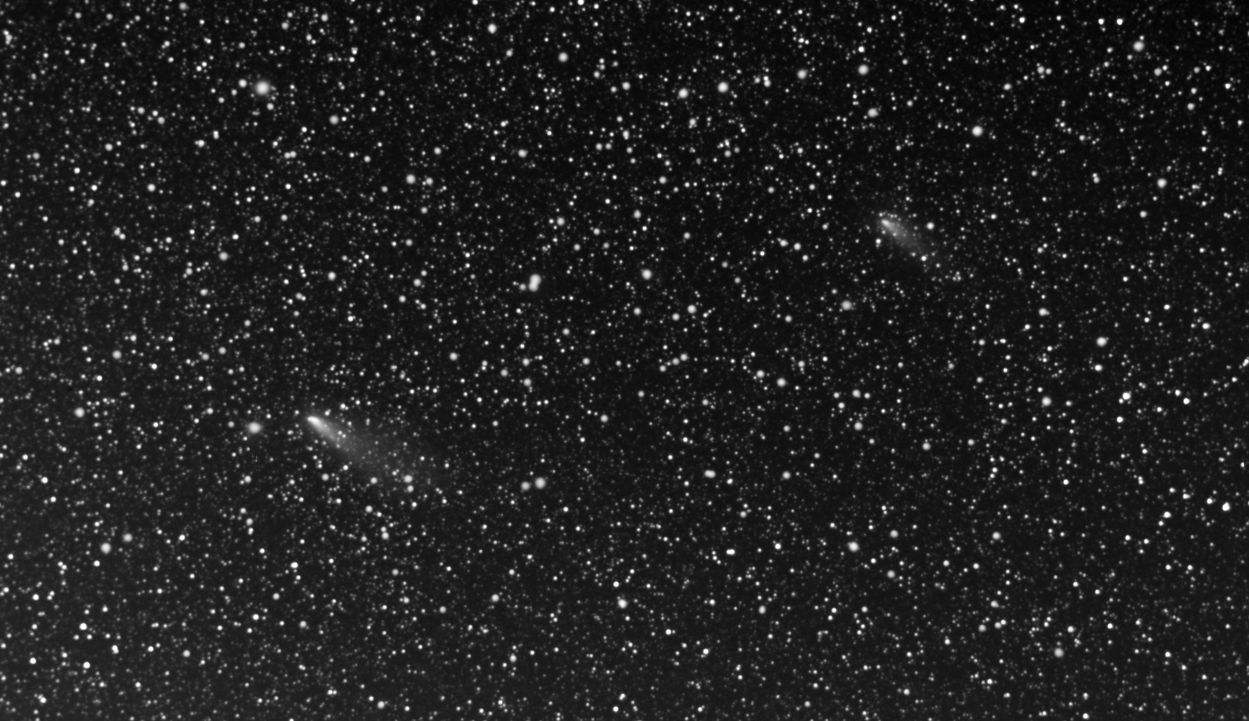
Comet 73P/Schwassmann-Wachmann 3 was disintegrating or dying when this image was taken. The comet is breaking apart into a number of fragments. The reason for the comet's fragmentation is unknown, but it began in 1995 when the comet first split into 3 pieces. At the time this image was taken, 19 fragments had been discovered. Each fragment is a dim mini-comet parading across the sky. The two largest could be seen with amateur size telescopes at the time this image was taken.
Comet 73P/Schwassmann-Wachmann 3 was discovered in 1930 by Carl Arnold Schwassmann and Arno Arthur Wachmann. At the time, they were photographing the sky looking for asteriods. This is a periodic comet that orbits the Sun about every 5-1/2 years. The comet was lost and was not observed when it was predicted to return in 1935-1936. This comet remained lost for many years after its 1930 appearance. In 1979, astronomers reported the discovery of a comet that turned out to be the lost comet 73P/Schwassmann-Wachmann 3. The comet was missed again when it returned in 1985-1986. However, it was recovered in 1990 and reached a maximum magnitude of 9.
Comet 73P/Schwassmann-Wachmann 3 surprised everyone in 1995 when it underwent several outbursts and became much brighter than expected. At that time, three separate fragments were detected. When the comet returned in 2001, it was again brighter than expected, and was widely observed even though it was poorly placed for observation. During the 2006 apparition, comet 73P/Schwassmann-Wachmann 3 will pass within 0.0735 AU from Earth on May 13 and will reach perihelion on June 7, 2006.
This is a CCD image taken with an FLI IMG6303E CCD using a Nikon 35mm lens. The image was taken at a dark sky location in western Arizona.
Constellation: Hercules
RA: 16h 38m 17s Dec: +31d 45' 26".
April 30, 2006
Image by Sid Leach
Scottsdale, Arizona
Recent Images.
Complete list of images.
Description of equipment used to acquire images.
Home
Feedback and comments should go to Sid